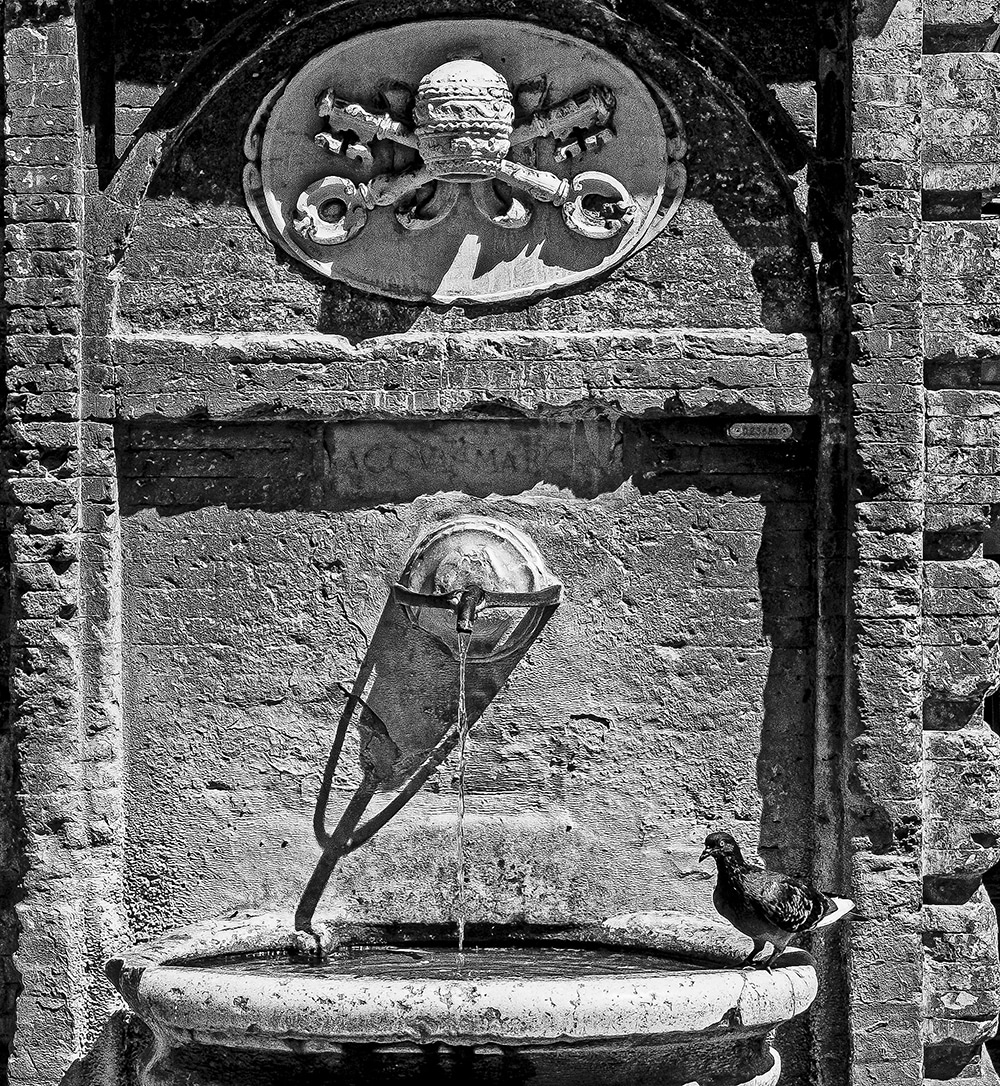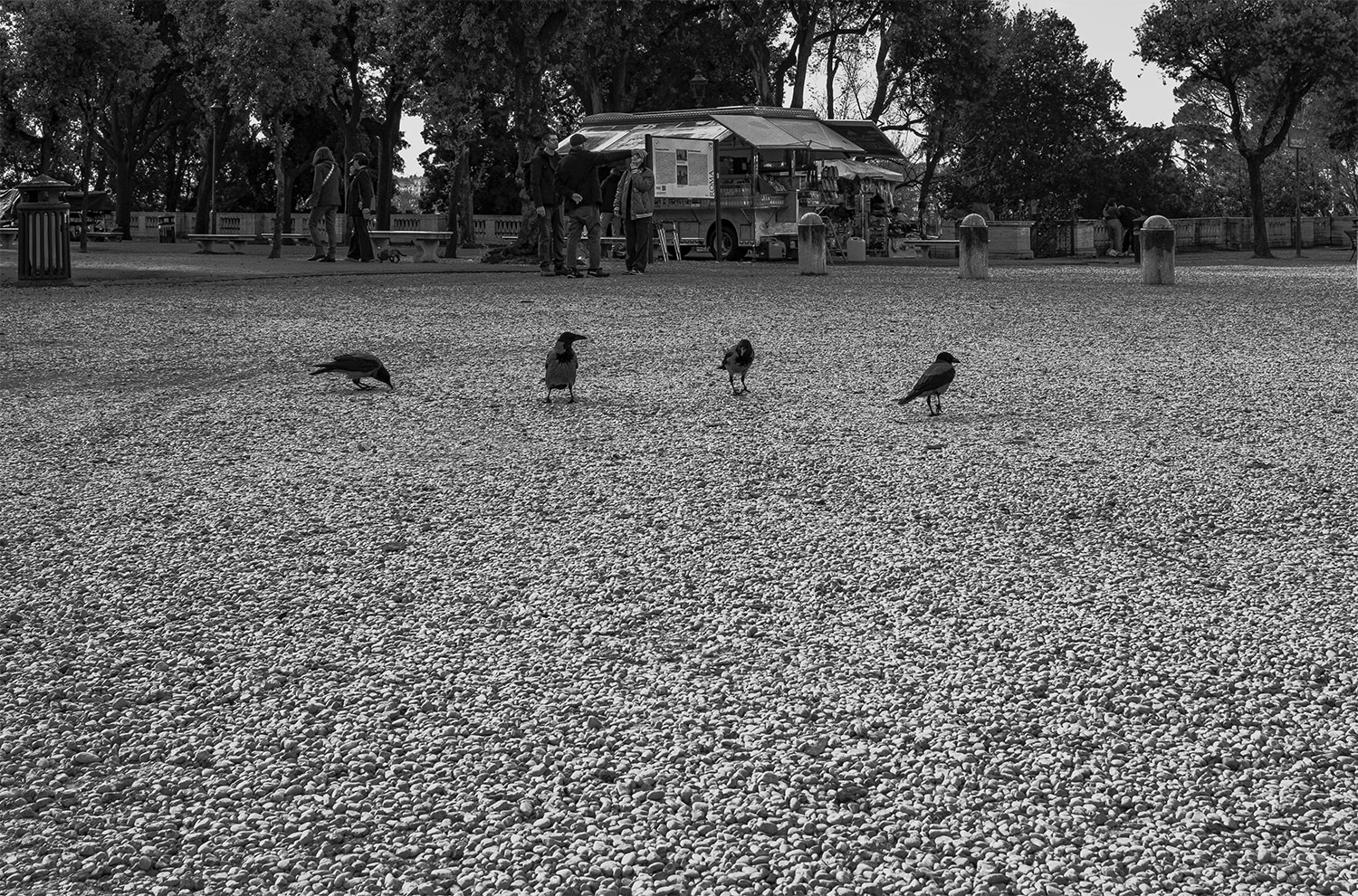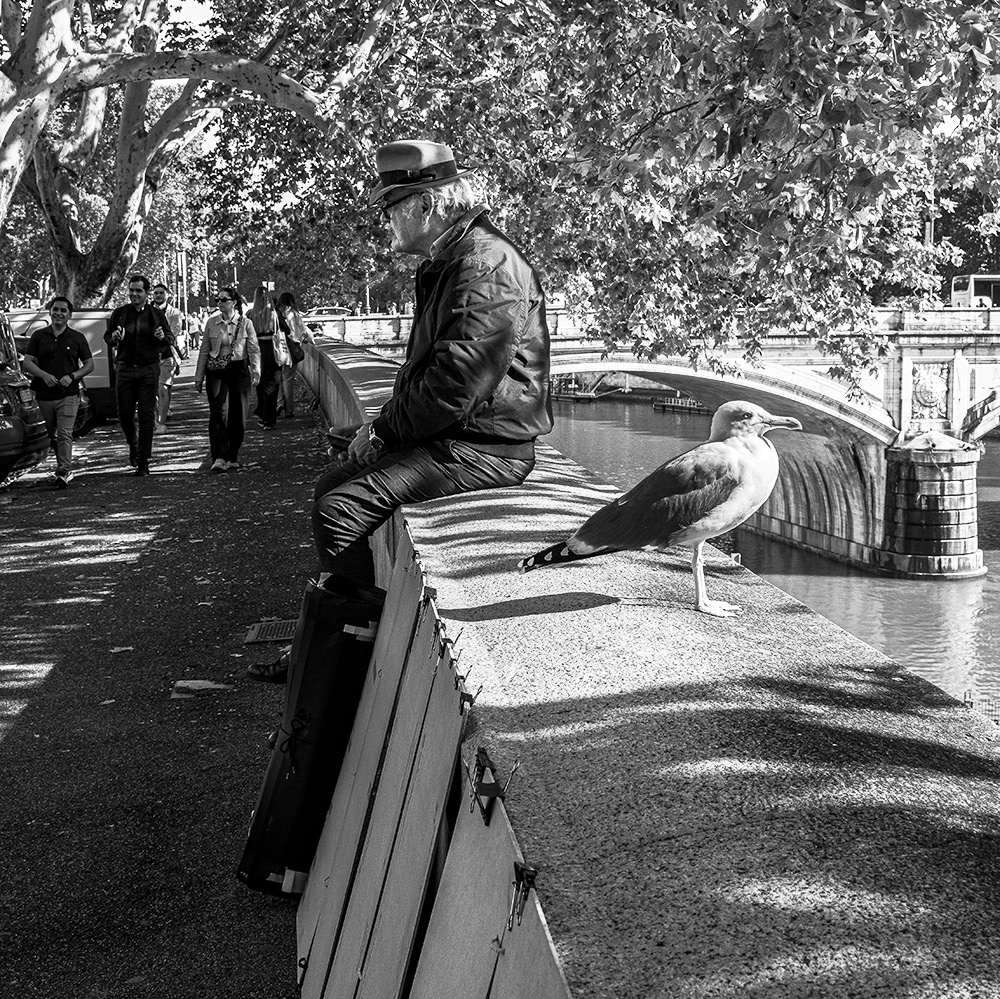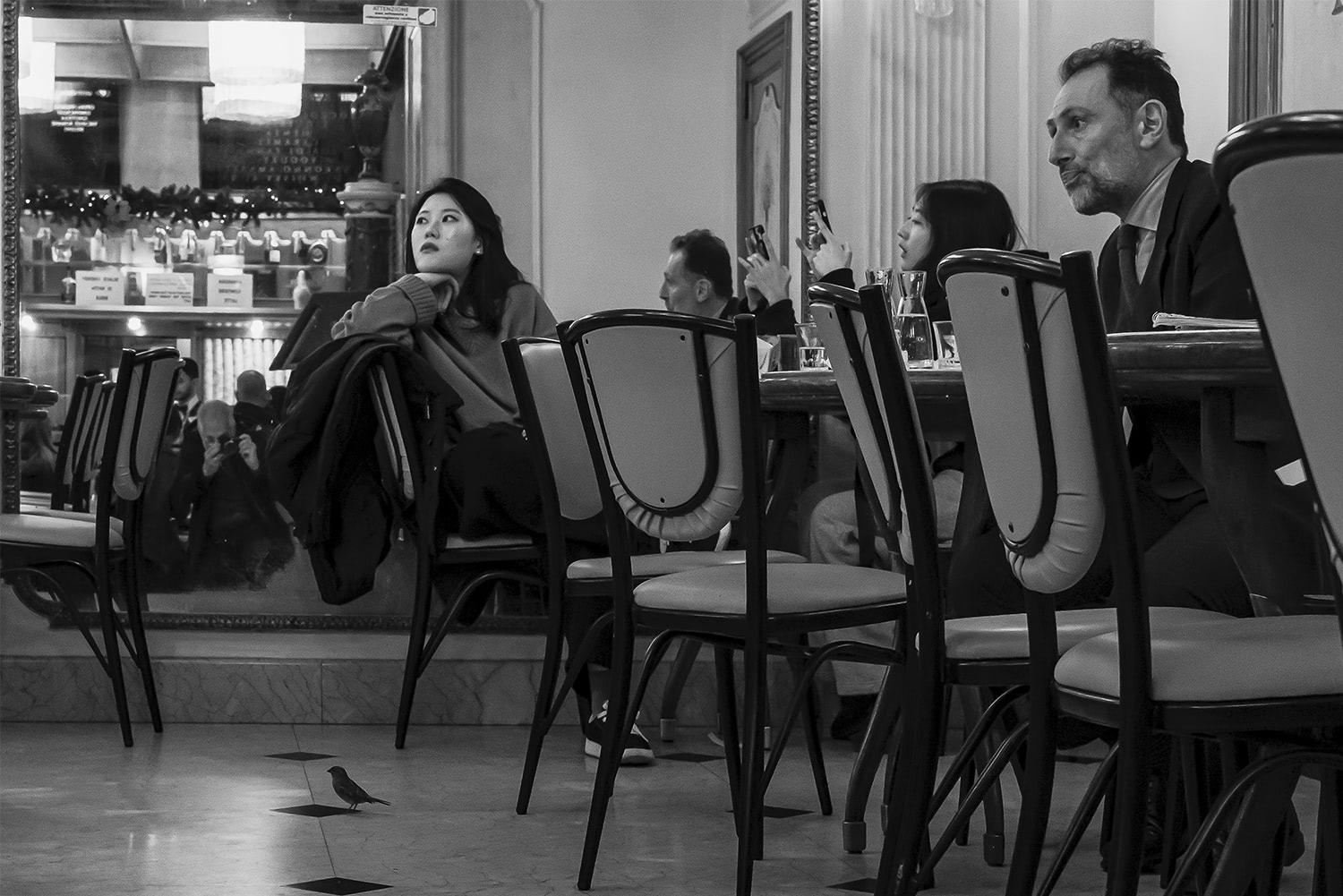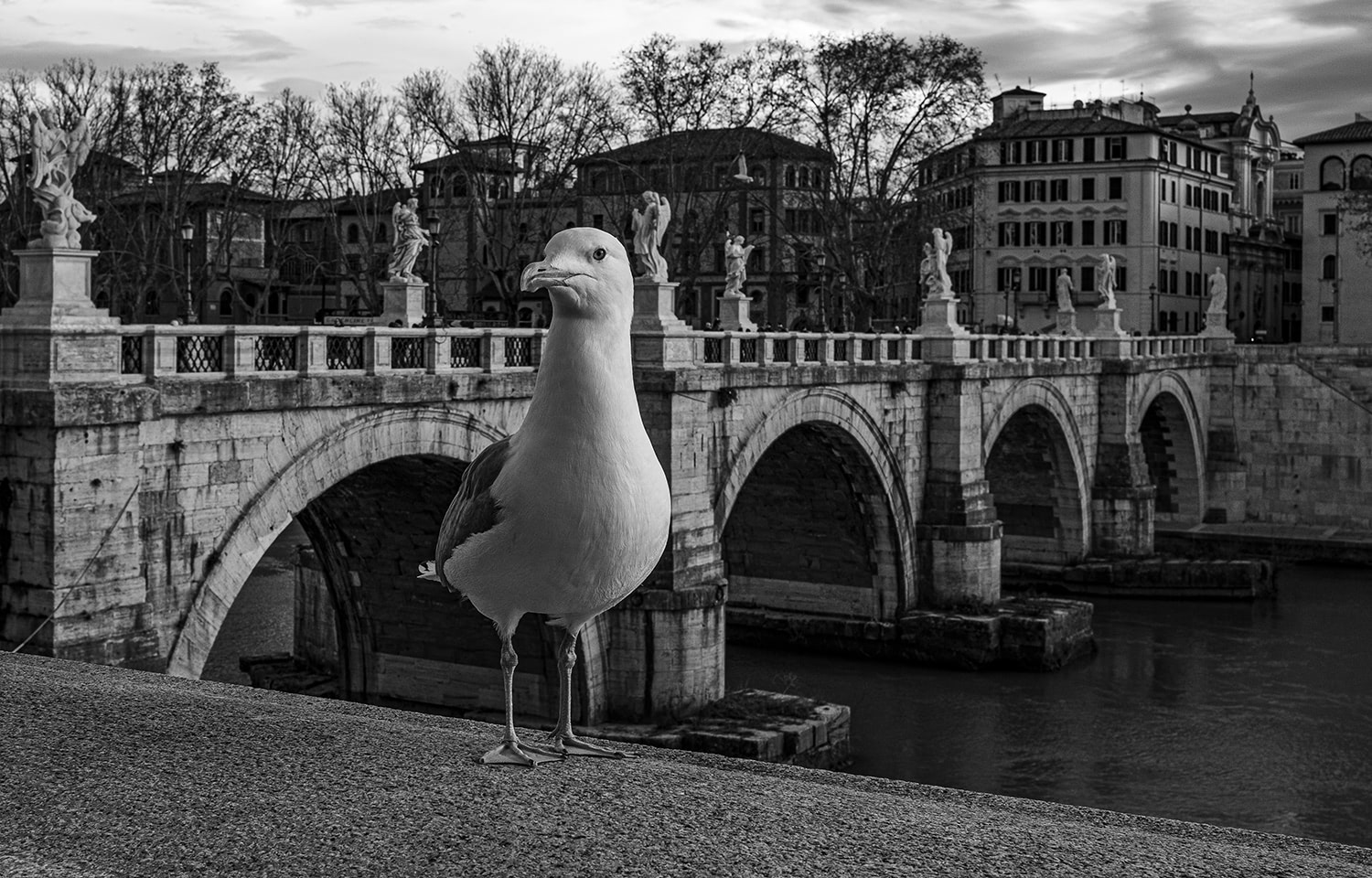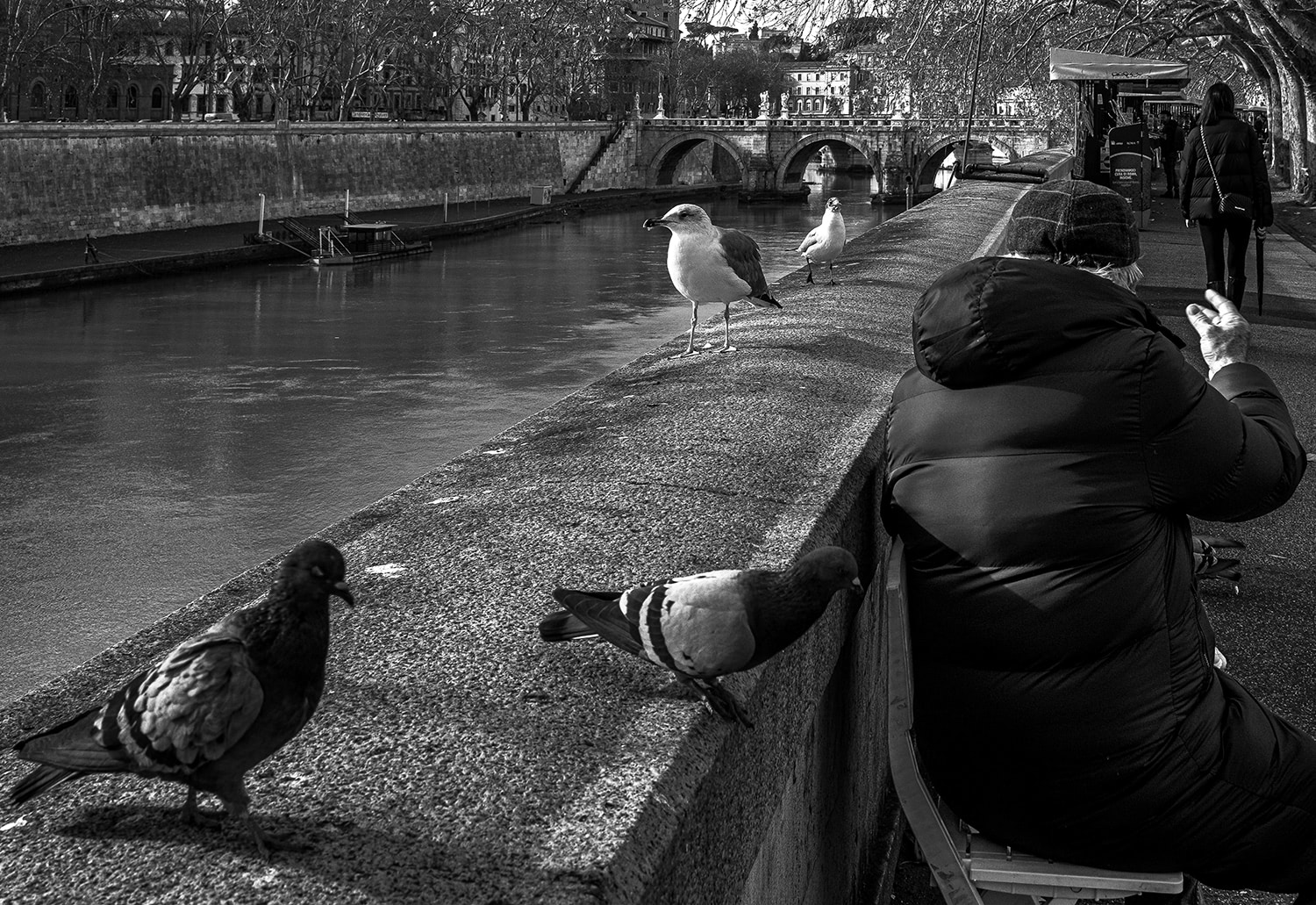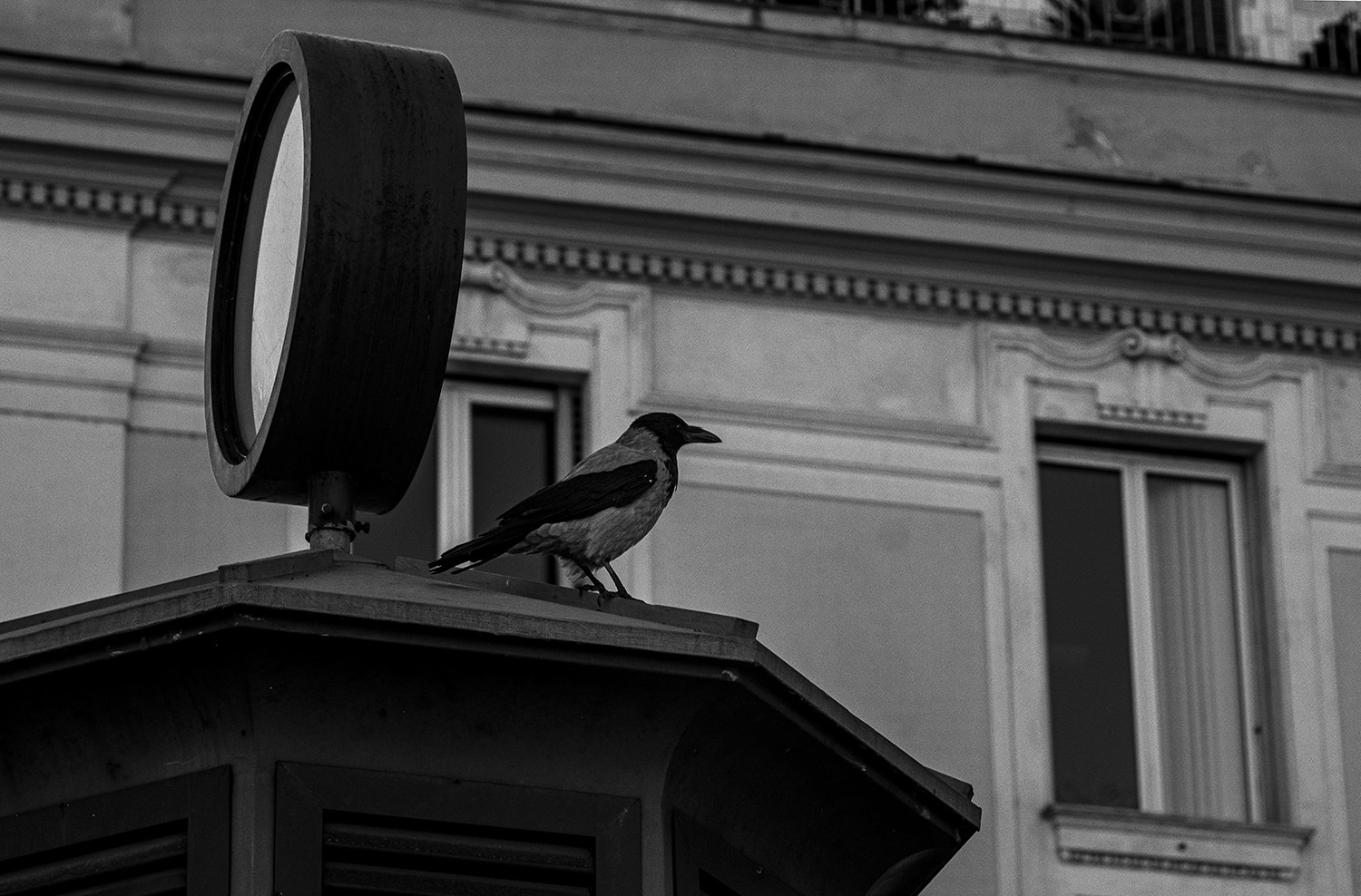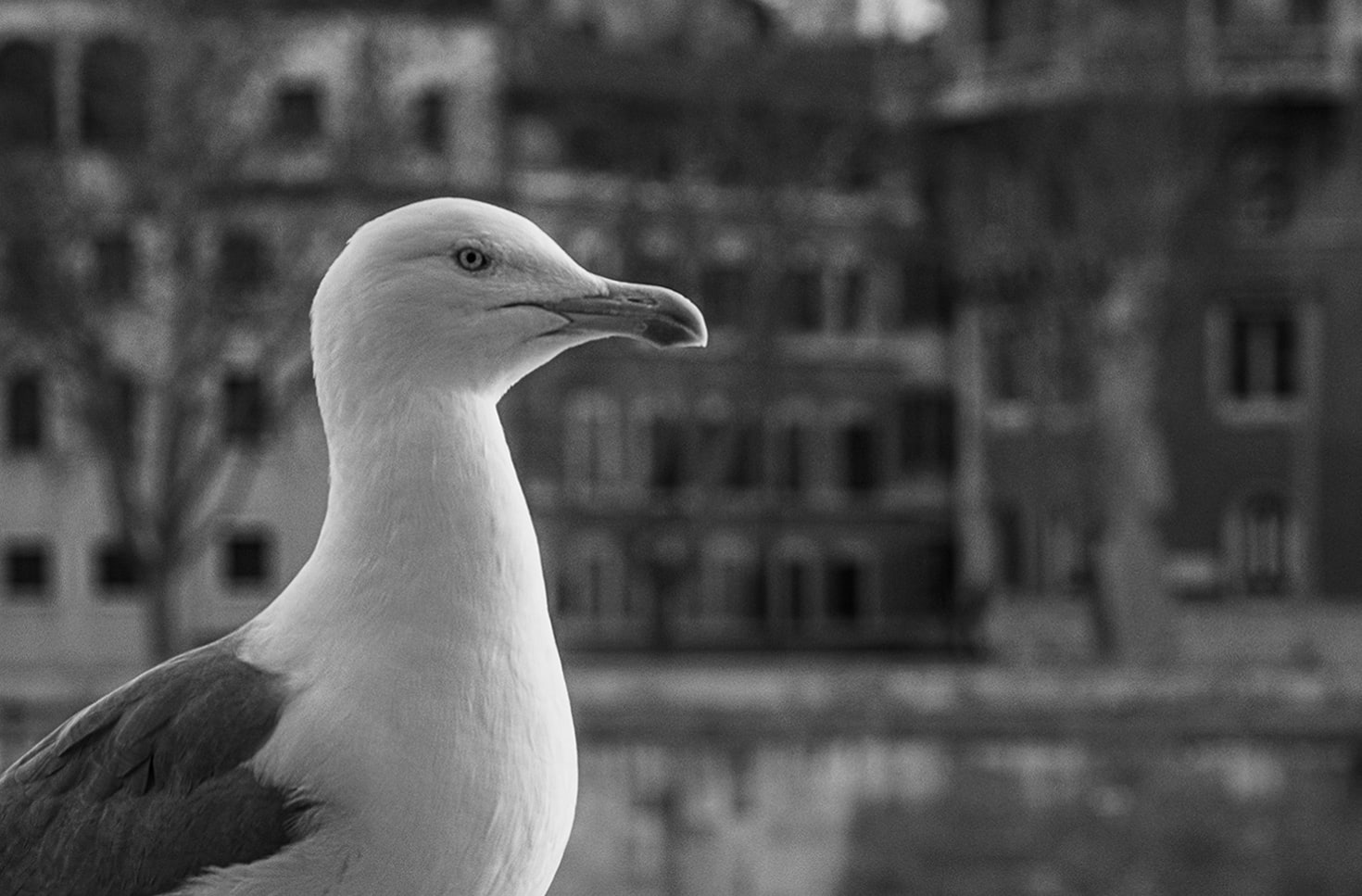
A part of the wildlife has always adapted to the new habitats created by us, a prime example being mice, our unwelcome companions for millennia, as well as numerous other mammals such as raccoons, foxes, hedgehogs, squirrels, lately even wild boars, which, although they have not become domesticated, live permanently with us in many cities.
And even dinosaurs, in the form of their direct descendants, fill countless ecological niches in our urban centres: colonies of seagulls transformed from predators into scavengers, pigeons invading squares and fountains, passerines, parrots escaped from their cages and re-homed.
But they have a different gaze from the other wild animals that thrive in our population centres, a more disturbing one: the fixed, expressionless eye of a seagull that scrutinises us seems to tell us that they were once in charge on Earth, and would have continued had it not been for that unfortunate asteroid that exterminated all the countless dinosaur families minus the birds.
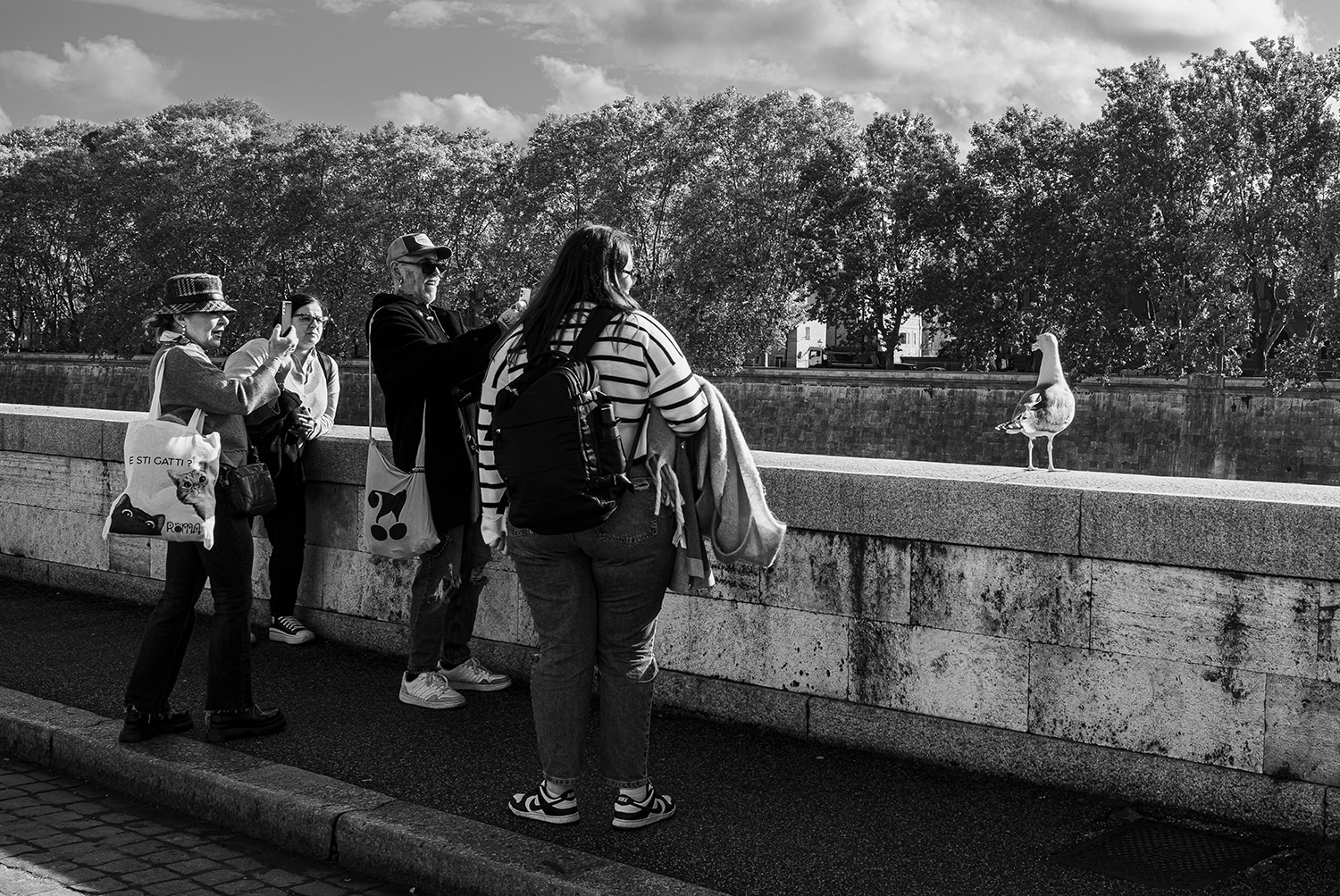
They are alien and somewhat surreal presences in our cities, even when we attribute familiar attitudes to them, or they assume funny poses, you only have to stare into their glassy eyes to feel the slight shiver of someone who knows that this look is saying that sooner or later we will be extinct and they will resume their place as masters of the world.
